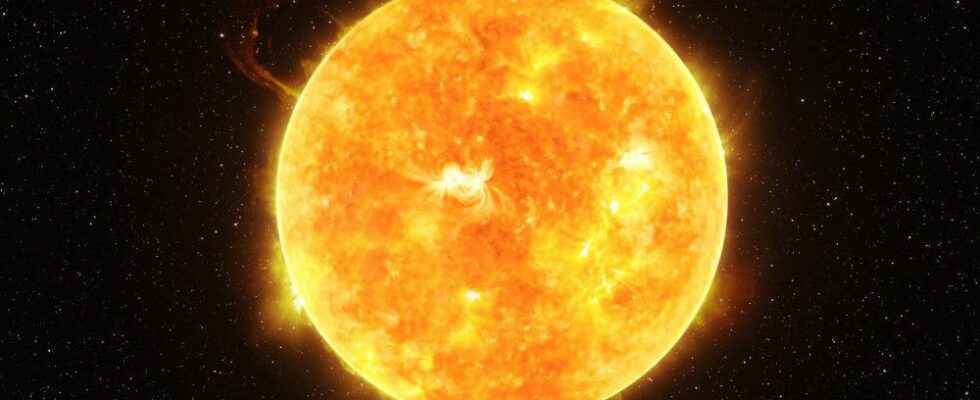ESA researchers can now use new data to more accurately predict when and how our Sun will die.
Enlarge
New findings: This is how our sun dies.
© Lukasz Pawel Szczepanski/Shutterstock.com
Gaia, the space telescope of the European Space Agency ESA, records the universe and its stars (although not all, only those with a certain brightness) more precisely than any other space telescope before it. Now ESA scientists can use the data collected by Gaia to predict when our Sun will die.

In the Gaia data, the researchers compare stars of similar mass, temperature, size and composition to our sun, but of different ages, and use this to derive the further development of our sun. So far, the scientists have actually found 5863 stars comparable to our sun. The researchers now have to examine these more closely in order to be able to predict more about the future of our sun.

Enlarge
The different development possibilities of stars.
© ESA
This is how the sun develops – the forecast based on the Gaia data
The sun is currently about 4.6 billion years old. So about halfway through her life. It is very stable from an astronomical point of view and diligently fuses hydrogen into helium.
At the age of about eight billion years, our sun will reach its maximum temperature. The increasing warming of the sun should then mean the end of the earth.
After that, the sun will cool down again and get bigger and bigger. At around 10 to 11 billion years old, it becomes a red giant and then rapidly increases in size. The end of the sun’s life comes shortly thereafter, when nuclear fusion is no longer possible because the hydrogen has been used up. The sun will then become cooler again and shrink into a faint white dwarf that will continue to cool over many billions of years.
This basic process is normal for stars and nothing special about our sun. But the billions of years determined thanks to Gaia are exciting.
